They are the very symbol of champagne, these small, fine, sparkling bubbles, but how do these bubbles appear? What are the phenomena that cause the famous "pop" that is so sweet to the ear when opening a bottle of champagne? Welcome to the magical and mysterious world of champagne.
When wine becomes champagne
From grape juice to champagne, there is an incredibly precise chemical and physical transformation process that takes place. At the beginning, the grapes are pressed and then placed in a vat to undergo a first fermentation, what is called alcoholic fermentation.
To this original juice, a small quantity of "liqueur de tirage" composed of wine, sugar and yeast is added. This liqueur causes a second fermentation forming carbon dioxide. This "prise de mousse" represents the final moment when the so-called "still" wine will become effervescent by giving rise to bubbles of carbon dioxide. Its alcohol content also increases to 12.5°.
How long does this “foaming” last?

In 6 to 8 weeks, the yeasts will feed on all the sugar and produce alcohol and carbon dioxide. This gas gradually dissolves in the wine and the pressure slowly increases, up to 6 bars at the end of fermentation.
If it is handled several times, particularly with the riddling stage which consists of shaking the bottle to make the sediment (yeasts and riddling aids) descend into the neck of the bottle, then the disgorging stage which allows this deposit to be eliminated, the wine continues its work of effervescence and will only release the much sought-after gas at the moment of the final opening of the bottle, this famous sparkling and joyful explosion which makes all the singularity and the festive spirit of champagne.
Time as an ally
This transformation is absolutely not anecdotal because this sparkle will have the effect of improving the aromatic qualities of the champagne wine by developing secondary aromas. Placed in a lying position, the bottles will rely on time to develop beautiful fine and harmonious bubbles. To do this, they need an environment at a low and constant temperature such as that found in champagne cellars. When the bottle is opened, the pressure created by the carbon dioxide escapes and pops the cork with this characteristic sound, the culmination of a long maturation. But is this phenomenon the only one at the origin of the effervescence?
Glass, creator of bubbles

In addition to this alcoholic fermentation, another external element will cause the appearance of small bubbles. It was long believed that the irregularities of the glass champagne bottle were the cause of the appearance of bubbles. In fact, it is rather when serving the champagne that these bubbles come to life.
The small impurities or roughnesses inside the glasses allow carbon dioxide to escape. Surprising, isn't it? Because even if it seems perfectly clean, a flute always contains irregularities. It is also amusing to observe these small bubbles escaping in columns, starting from a fixed point on the glass and rising to the surface.
And how do you keep these bubbles when the bottle of champagne is opened?
Let's put an end to a persistent legend, no, the teaspoon placed in the opened bottle of champagne will not retain the bubbles. To preserve an opened bottle, it is better to use an airtight stopper which will be much more effective.
These technical explanations will never replace the elegance that emerges from a champagne bubble, that cheeky "pop" of good humor when opening a bottle of champagne, but it is always exciting to lift a veil of mystery on this exceptional wine.




